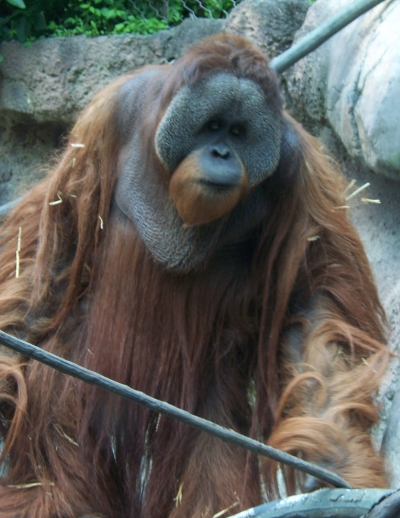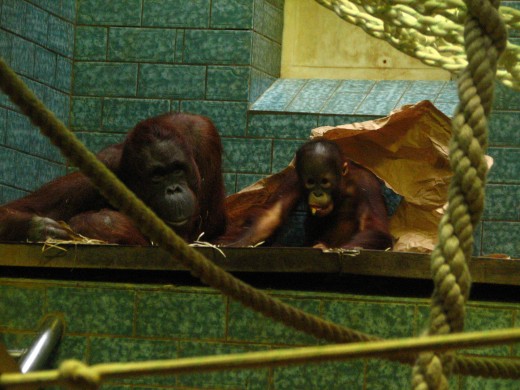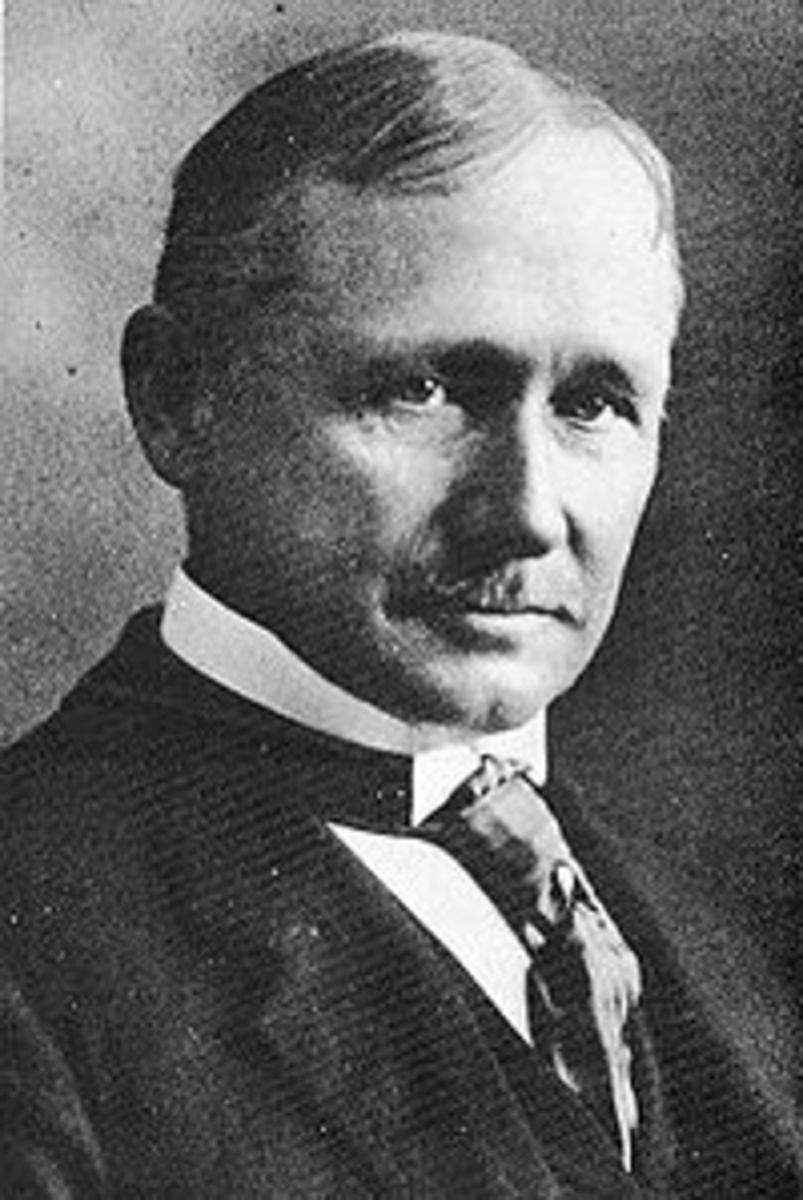Example of Participant Observation in Primatology
I visited the Birmingham Zoo last Saturday and spent two and a half hours observing the orangutans there. There were three orangutans present at the exhibit: a male, female and an infant (sex not determined). The male spent most of my observation time sleeping, though he did awake briefly to climb around for about 10 minutes before returning to a hammock where he went back to sleep. The male had no social interaction with the female or the infant while he was awake and very much kept to himself.

The female and the infant orangutan were the bulk of my observed interactions. The female and the infant were never more than a few feet apart at any given time. When I first arrived, the female and infant were located in the bottom of the habitat (partly shielded from view) but I was able to observe the infant at play with a bale of hay. The infant would cover itself in the hay, as if trying to hide from the female, or perhaps the observers (me and other zoo visitors). I was able to observe some grooming interactions between the female and the infant. The female would use her fingers and mouth to show the infant attention. I noticed that the body language during grooming was intimate, soft and slow gestures by the female while the infant responded by calmly patting the female’s hand that held it. When the female decided it was time to move around, the infant would climb onto her (reverse piggyback) and hang from the female’s underside while the female made her way to their next destination, which was always only a few feet away in the habitat.
I was not able to observe any feedings or visitations by zoo employees. I did however, notice behaviors (between the female and infant) that occurred when groups of zoo patrons would come into the habitat viewing area. During the two and half hours I spent much of my observation time alone with the orangutans. It was about halfway through my visit that I realized the orangutans disliked visitors and spectators. I was able to notice this because when I was alone, sitting quietly and observing them, the female and infant would be relaxed and play or groom one another. Play often consisted of the infant exploring the area they were in a playing with hay, leaves or a stick. The infant reminded me of a human toddler that would be into everything, searching for chemicals beneath your sink, in order to drink them. The female kept close by the infant but was largely unconcerned with the infant’s activities (no household cleaners in the habitat). It was during one of these times of play and relaxation that I noticed the orangutans behaviors would change immediately, once a new observer or a group of kids passed through the observation area. The female would scoop up the infant and move behind a large tree, located in the center of the habitat, and hide from their “visitors”. When the visitors left, the orangutans would once again fall back into relaxation and play. I was able to experiment a little with how my behavior would affect the orangutans by changing my own position and observing their reaction. I noticed when I would approach the glass and lean against it, watching the orangutans, they would retreat behind their tree. If I were to remain seated on the benches near the back of the observation area the orangutans could still see me and I them, but they were much more relaxed and after a few minutes they would forget I was there.

Overall, I think the orangutans were depressed. Two factors indicate this to me, one being how the orangutans behaved when watched by loud spectators, by hiding. Though I am sure the traffic must be slower during the week than on a Saturday, the waves of visitors ranged from large to small but were always frequent and filled the habitat with stress and anxiety. Also, how sluggish the primates were in general. Even in the quiet moments when I disappeared from their notice there was very little in the way of excitement or happiness in any behavior, save the infant who was always exploring when the rare opportunity arose. I chalk this up to the exuberance of youth, no matter one’s situation. Whereas the male slept for my entire visit, the female used the quiet moments doing very little but watch the infant and try to recover from the endless waves of zoo patrons.



